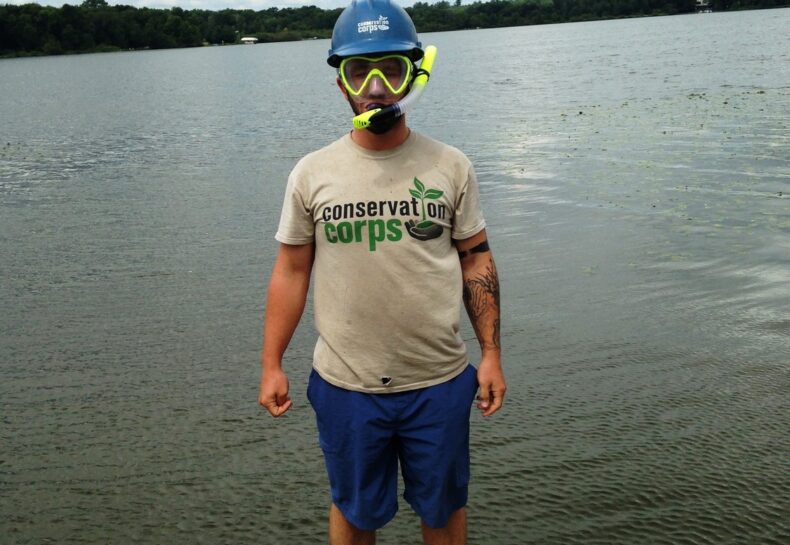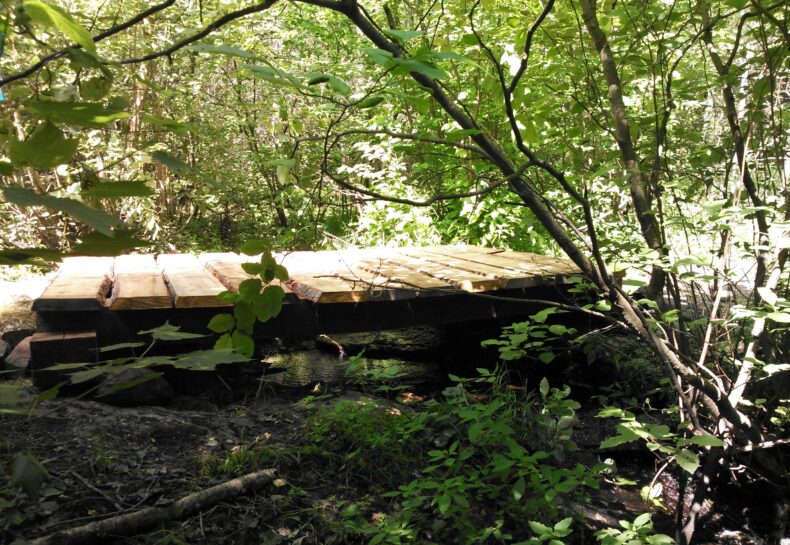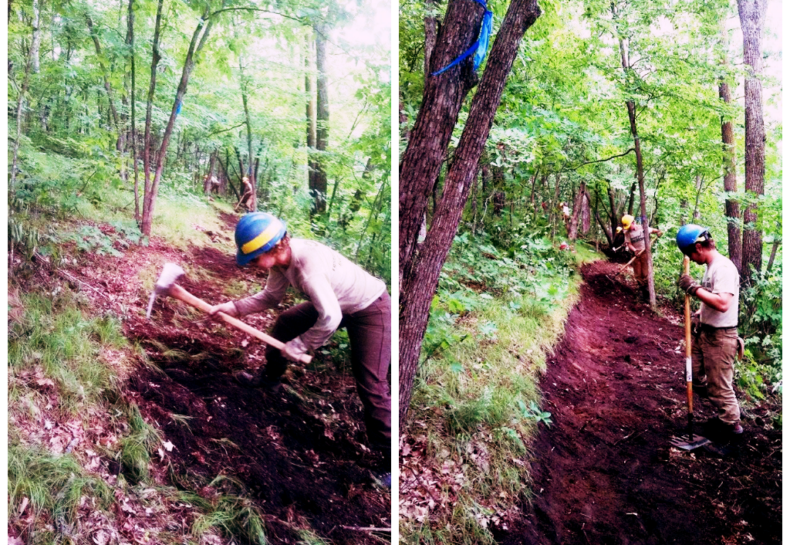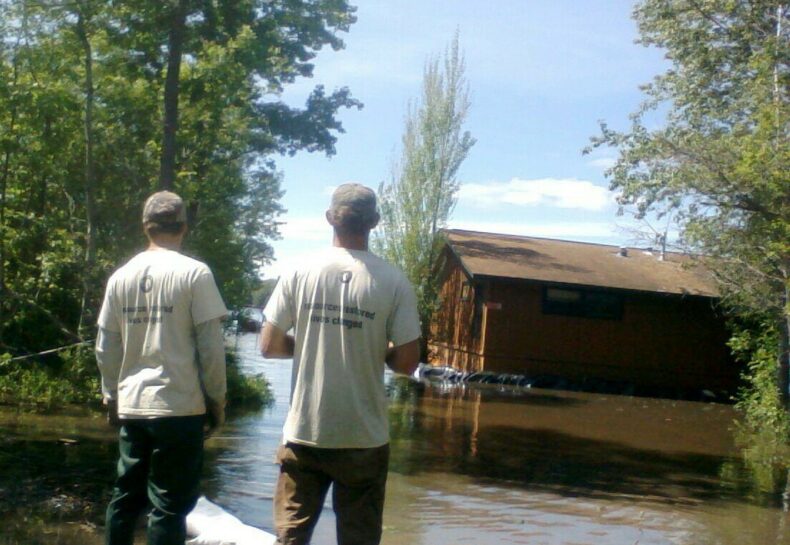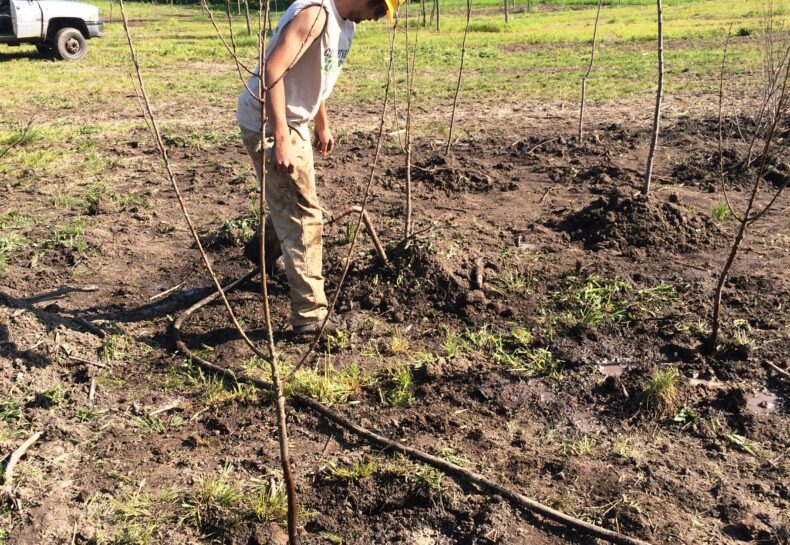Updates & Stories
A battle in the war against biological warfare
Have you ever heard anyone say to just “let nature take its course?” Whoever first said it probably wasn’t speaking literally, nor did they understand the ecological implications of an invasive species on a native species. The infamous buckthorn, for instance, is just the tip of the iceberg in terms of invasive species. Many more continue to prosper and take over the land. Some of these invasive species, much like native species such as poison ivy, have certain defenses that are unfriendly towards humans. In the last few months I’ve had to learn how to identify poison ivy and other noxious weeds. In fact, for more than two weeks we spent our days armpit-deep battling against wild parsnip, which is an invasive weed that is quite hazardous to humans although its taproot is, in fact, edible. So what’s bad about wild parsnip? Read More
Bemidji crew works Agassiz National Wildlife Refuge
The sun rose quickly through a clear sky, burning off all the dew that settled earlier in the morning. We were walking through a wooden trail, following our project host in the Agassiz National Wildlife Refuge to look at the work site, when the woods suddenly opened up to a prairie like a sea of grass spreading outward, the horizon only broken here and there miles in the distance by aspen and oak forests. Our job was to help create an oak savannah landscape by painting herbicide onto the aspen trees in one section of the land. We became familiar with the location, ate lunch, and began painting trees that afternoon. Read More
The Great Minnesota Boat Ride
“The Land of 10,000 Lakes” they say. The 800,000 registered boats in the state only need an average capacity of 6.75 persons to take the entire population of Minnesota for a boat ride this weekend. And with the actual number of lakes at 11,842 there should be plenty of room. Wow, the feasibility of this plan is pretty amazing. Just be sure to clean any plants off your boat and check for zebra mussels before you leave the boat landing! Read More
My other office is a canoe
I recently had the great pleasure of attending two Conservation Corps mid-year retreats; one for Individual Placements like me, and one for crews. The time spent with my fellow Corps members has been just the refreshment I needed. As Individual Placements, we don’t get as many opportunities to build camaraderie. It was nice to finally feel a true sense of community amongst my peers whether it was throwing down on the field during Corps Olympics or just relaxing around a campfire throwing a Frisbee. Victory was oh so sweet after my Olympics team, Loon, laid everything out there. Whatever hole was left from loss of dignity and sore muscles was quickly filled with s’mores. Besides the fun, I was glad we Individual Placements all got a chance to talk about our similar experiences; struggles, victories and all. Read More
We build bridges
We build bridges and docks, walls and trails, staircases to the highest elevations and well… you get the idea. We build things. It’s easy to see the structures we construct. They are lasting and useful, but its not easy to see the qualities we build in people.We build character. Not like regular character, but more like the character your grandad talks about when he used to walk ten miles to school uphill both ways, barefoot...through the snow.We build relationships. Not the “Hey, I saw you in the grocery store one time” kind of relationships, but the “You changed my life, thank you for being here and being who you are” kind of relationships.We build strength. The old man muscle, the kind that makes you feel like “Popeye ain’t got nothin’ on me”. Strength of the will and power of the spirit. Read More
Life on the run
This summer has been absolutely action packed. I feel as though I have been living like a drifter on the run from the law, but that is probably just my imagination getting away with me. I swear that I am a regular law-abiding citizen, though I haven’t spent a full week at home for the past two months. Lately it seems there is always some event or place to spread the word on solar assistance, whether it be client calls, fairs, classes, conferences, or retreats. This leads me to travel hundreds of miles in just one or two days and sleep in strange places on the regular. It is both maddening and so very fun! Read More
They don’t call us the Ottertrail crew for nothin’!
June has meant the return of real warm weather, and with that, some of our favorite work. The Ottertail crew spent two weeks in Becker County this month on the beautiful North Country Trail, a long-distance trail that will eventually stretch from New York to North Dakota. We had the pleasure of working with Ray Vlasek, volunteer coordinator for the Laurentian Lakes chapter of the North Country Trail Association, who graciously put down his pulaski for a few minutes one lunchtime to talk about life, trails, and what it’s like to work with the Corps. Read More
Floods in the north: A community comes together
What does it mean to be part of a community? If you asked me what it is that the Conservation Corps does four months ago I might have been hard-pressed to give you a straight answer. I believe now, quite strongly, that I know what it means to me to be part of this organization, what we represent, and exactly what it is that we do.An iron-willed individual, with the strength of an ox, could toil his days and nights away in an effort to move a boulder embedded in the ground and not move anything forward but time. A group of individuals with a common objective however, has the ability not only to move the boulder, but to use it as a tool. The newly found inertia of the stone converts to a gravitational pull which attracts more and more people to aid its motion until, before long, the stone that the individual could not move now floats across the ground as if it were weightless. Read More
“Tree Train!”
After what seemed to be a never-ending winter with dangerously cold temperatures and lots of snow, any sign of spring was more than welcome. Like many people, I associate spring with trees budding out and showing off their leaves. At the nursery, this sign of spring signals the start of spring harvest and planting season. Before anything can go in the ground, additional large bare root trees and shrubs have to be harvested to supplement those harvested in the past fall harvest season. The process is made very efficient through the use of one of my favorite pieces of machinery: the crawler. It has the ability to prune roots of trees and shrubs and shake off the excess dirt while two people stand on the platforms and hoist them out of the soil to pass onto the runners going back and forth to the delivery truck. Read More
Fire in North West
Some of the work we do involves wildland fire. Conservation Corps members not only help firefighters with wildfire suppression, but also help natural resource managers with prescribed burns. Part of our training includes the completion of a week-long course for an Incident Qualification Card, or Red Card. The Red Card is a certification given by the Minnesota DNR that qualifies individuals to work with fire at federal, state, county, and local agency levels.Corps members most often help with wildland fire ‘mop up,’ which is the work done after flames have been extinguished and the fire is no longer running. In the burned or ‘black’ area, firefighter doing mop up put out smoldering material and clear logs, brush, and other fuels from the edge of the burned area to prevent the fire from reigniting. Mopping up after the fire has been controlled has been my experience with wildfire as part of the North Woods crew. Read More


